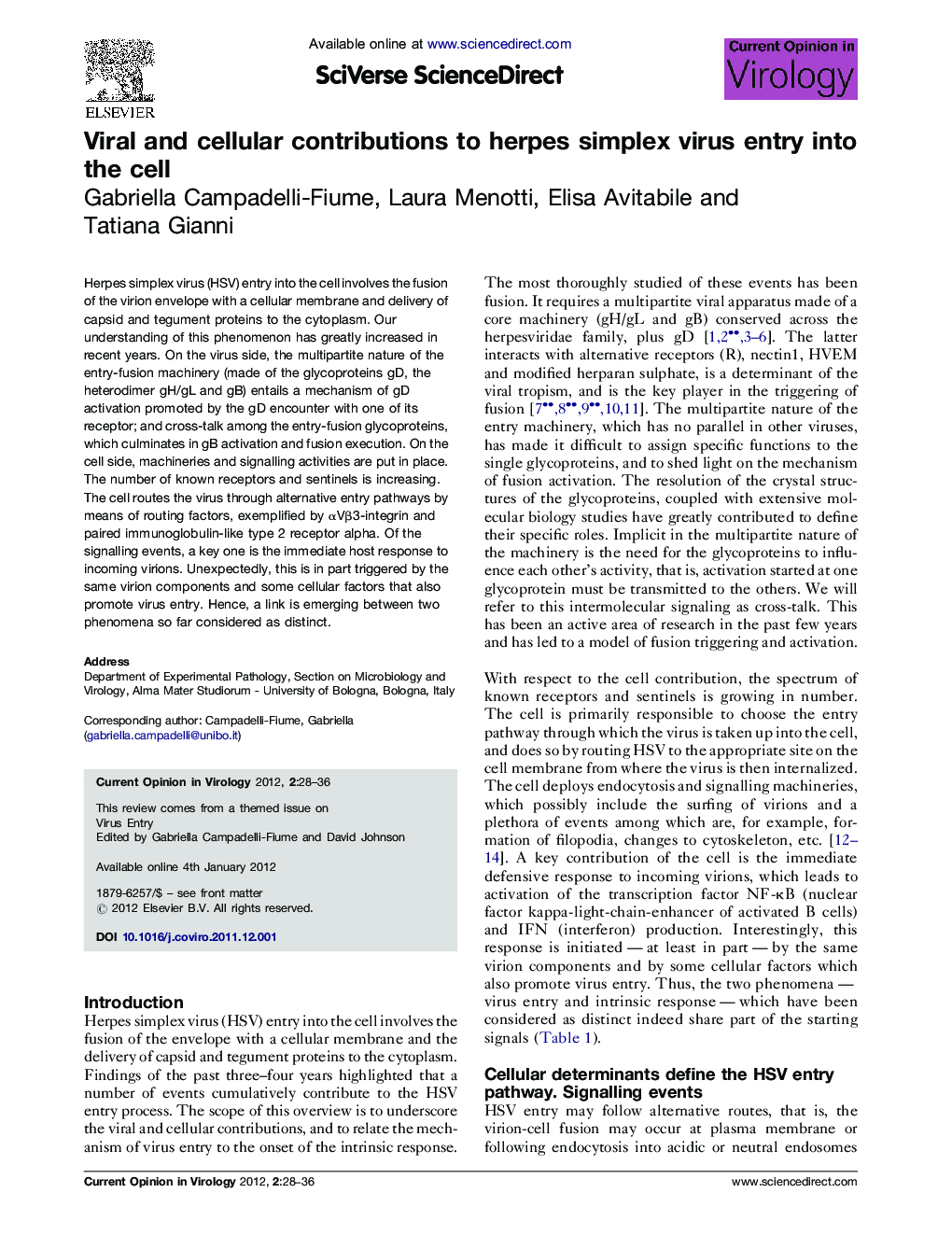| Article ID | Journal | Published Year | Pages | File Type |
|---|---|---|---|---|
| 2473541 | Current Opinion in Virology | 2012 | 9 Pages |
Herpes simplex virus (HSV) entry into the cell involves the fusion of the virion envelope with a cellular membrane and delivery of capsid and tegument proteins to the cytoplasm. Our understanding of this phenomenon has greatly increased in recent years. On the virus side, the multipartite nature of the entry-fusion machinery (made of the glycoproteins gD, the heterodimer gH/gL and gB) entails a mechanism of gD activation promoted by the gD encounter with one of its receptor; and cross-talk among the entry-fusion glycoproteins, which culminates in gB activation and fusion execution. On the cell side, machineries and signalling activities are put in place. The number of known receptors and sentinels is increasing. The cell routes the virus through alternative entry pathways by means of routing factors, exemplified by αVβ3-integrin and paired immunoglobulin-like type 2 receptor alpha. Of the signalling events, a key one is the immediate host response to incoming virions. Unexpectedly, this is in part triggered by the same virion components and some cellular factors that also promote virus entry. Hence, a link is emerging between two phenomena so far considered as distinct.
► Crystal structures of gD, gH/gL and gB. ► Advancements in definition of glycoprotein functions: gD is a tropism determinant and trigger of fusion. GB executes fusion. ► Assembly of complexes among the glycoprotein quartet: intermolecular transmission of signals. ► Oncolytic HSVs retargeted to cancer-specific receptors: 2/3 of gD can be deleted or replaced with heterologous ligands. ► αVβ3-integrin as a cellular determinant of the entry pathway.
